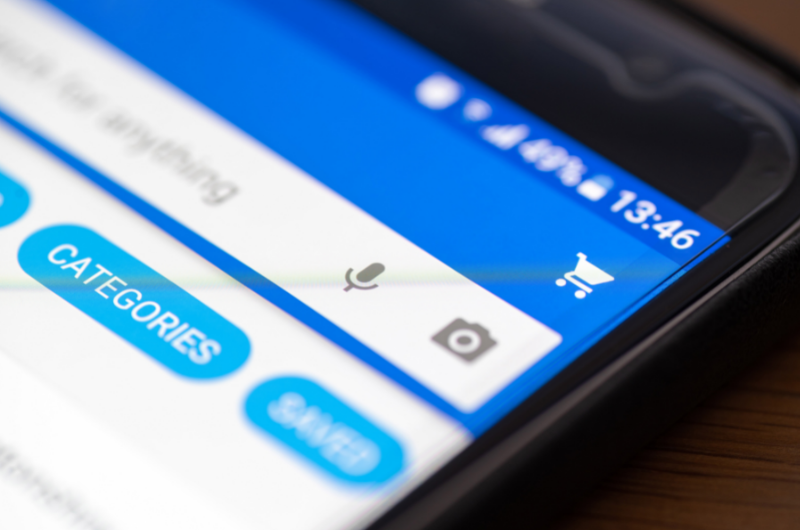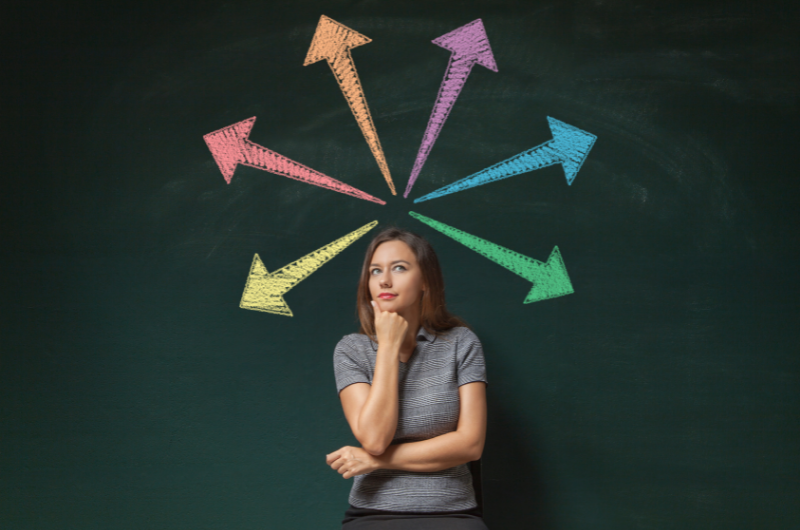Answer: 67%
The buyer’s marketing journey has gone digital, 67% of that journey to be precise, and one of the major reasons for that is search. Before your potential clients make a purchasing decision, they first execute an online search. Think about it; what do you do when looking for a new product or service? Chances are that the answers to these questions involve simply Googling or checking online platforms for a solution. This same logic applies to your customers, which is why an online search is the first step for many business executives and typical consumers. If your business is still overlooking online marketing investments in favor of print, word of mouth, or other offline strategies, you’re missing out considering how much of the buyer’s journey is digital.
Consumer experience has always been the focal point of high-performing sales and marketing strategies. For campaigns to deliver results, they must be highly targeted. They must also speak to your potential customers based on the stage at which they are in the decision-making process. This is where the buyer’s journey comes into play.

What is the buyer’s journey, and why is it so important?
The buyer’s journey is the decision-making process your customers go through before making an actual purchase. The journey consists of three steps which include awareness that they may have a problem that needs solving, consideration of possible solutions, and finally the decision to buy a particular product or service.
We’ll go over each stage in more detail, but it’s important to know that if you don’t understand your buyer’s journey, all of your marketing strategies will be based on guesswork, and that never drives conversions. Use your customer experiences as the framework of your inbound marketing strategies to meet your clients at the points where they’re looking for information. This will help you gently nudge them towards buying from you.
According to research, 57% of customers have completed most of the purchase process by the time they reach out to a business. This means that if you only focus your marketing efforts on the last stage of the buyer’s journey (decision), you’ll be missing out on connecting with buyers who are earlier in their process. A strategic content strategy allows you to nurture them towards a well-informed decision, making them more likely to buy from you. Think of it as positioning your brand right in front of the customer, but in a subtle and helpful way.
Guiding customers through the buyer’s journey also helps you foster trust, which greatly influences their purchasing decision. In fact, studies show that 82% of US consumers will purchase from and stay loyal to a brand they trust, even when another business promises better and more affordable products or services.

3 Stages of the Buyer’s Journey
The buyer’s journey has 3 main stages that highlight how they progress through the decision-making process; awareness, consideration, and decision stages. Here’s a quick overview of what these stages mean and the type of content you should be pushing out at each stage.

Awareness Stage
At the awareness stage, the customer is very early in their buying process may not even know that there is a solution out there that solves their problem. They are typically struggling with the pain from their issue and turn to search engines like Google to research quick fixes to their problem.
For example, if someone has an older computer that is continually glitching or running slower, they eventually realize they have a problem that needs to be fixed. They have not yet decided to buy a new computer, but are starting to research how to make it run faster or troubleshoot the glitches. This is the awareness point where you should focus on providing your customers with helpful information. Keep in mind that they are simply looking for answers to their problem and are not ready to make a purchase. It is crucial you educate them while being impartial to foster trust.
Some of the pieces of content you should focus on includes:
- Blog posts
- Whitepapers
- E-books
- Informational videos

Consideration Stage
During the consideration stage, the buyer understands their problem and is considering various options to solve them. In our computer example from above, they’ve learned that simple fixes will not solve their problem for long and that a new computer is ultimately the best option. In this case, the buyer will likely turn to Google and start with broader search topics such as, “best computer” or “best laptops 2021.” Or they might seek additional answers to questions with phrases like, “mac vs pc” or “best computer for remote work”. These kinds of terms are referred to as keywords, and it’s important that you include them in your content strategy to make your business more discoverable via SEO.
Keep in mind that at this stage, the buyer is STILL not ready to make a purchase and is still weighing potential opportunities, exploring various brands, and comparing prices. Therefore, your main aim should be to make it on their shortlist by showcasing yourself as an authority in your industry.
To stand out from the noise:
1. Build Credibility: Why should they buy from you? Present yourself as an industry thought leader by highlighting your customers’ testimonials, using a modern and professionally designed website, and introducing demos.
2. Demonstrate Value: Prove to potential buyers that your solution can solve their pain points without being overly promotional. Create expert guides, informational videos, podcasts, or webinars focused on the features or benefits of your products or services.
This stage is especially critical if you’re dealing with high-value products or services.

Decision Stage
At the decision stage, the customer has already evaluated their options and is making a decision on which store or service provider to do business with. This is where all your hard work hopefully pays off, and you can close the deal. It’s time to show customers what makes your product or service a unique offer. Remember all that promotional content you’ve been holding off on? This is the best time to unleash it.
Keep in mind that even though price impacts the customer’s buying decision, buyers also look at experience and value. You should now focus on content such as product reviews, case studies, and training videos, product comparisons, etc. to help them make the final decision. You should also offer your customers incentives such as exclusive discounts and free trials to nudge them along.

Accelerate the Buyer’s Journey
Making sales is all about fostering and nurturing relationships. This is why it’s critical that you tailor and map your content marketing strategies based on the buyer’s journey. Here are 4 practical tips on how to fast-track the conversion process.
1. Attract the Right Traffic
You could be getting thousands of online website visitors, but if most of them aren’t part of your target audience or buyer persona, then you’re wasting your resources. Start by doing keyword research to identify the phases that your customers are using in their searches and then incorporate them into your content. Craft high-quality content that’s meant to help your customers and then conduct on-page and off-page SEO to increase your visibility.
2. Map Content to Buyer’s Journey
General content will never drive conversions. You need to map out all content based on the stage of the buyer journey that the customer is on.
- Awareness Stage: Focus on content that answers your customer’s most critical questions. It should be easy to digest and in no way promotional such as blog posts, social media marketing, and infographics.
- Consideration Stage: At this stage, content should outline your unique approach to solving their problem. Make sure they understand the benefits of doing it ‘your way’. This could be in the form of white papers, webinars or even podcasts.
- Decision Stage: The content at this stage should drive the customers to make a purchase. Create content that highlights your competitive edge, industry expertise, and happy customers. Case studies and product reviews work best since people are motivated by social proof.
3. Understand Your Data
Data-driven digital marketing is the future, and it’s not hard to see why. Your customer data is a gold mine for important insights that could help revolutionize your sales processes. In fact, studies reveal that companies that leverage data-driven marketing are most likely to have a competitive edge. There’s just one main challenge associated with data; it’s usually available in vast quantities. This makes it difficult to analyze all the metrics available and glean useful information from them. The good news is that there are several platforms such as HubSpot that you can use for a single integrated view.
4. Be Strategic with Calls to Action
CTAs are the main drivers of lead generation and sales. They let your customer know what action you’d like them to take and eliminate decision-making fatigue on their end. This ensures that customers continue moving through the buyer’s journey, instead of exiting prematurely.
They’re also a great attention grabber. For example, including a CTA button captioned with ‘Free Trial” is more likely to drive conversions compared to expecting your customers to find your contact page to and submit their interest there.

Work With an Agency That “Gets It”
Now that you know how much of the buyer’s journey is digital, you should start aligning your content and digital experiences to the customer’s decision-making process. As outlined above, focus on providing them with relevant content based on the stage that they’re on. This will significantly build customer trust and increase your conversion rates.
If you have questions as you go, or would like help integrating the buyer’s journey into your sales and marketing processes. Schedule a call with us so we can help go further, faster.



Comments are closed.